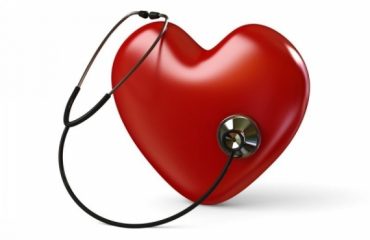This has to be one of the coldest, dreariest, and snowiest winters on record. Spring isn’t shaping up any better with snow and rain storms heralding its arrival. Everywhere you turn, people appear depressed, lethargic and moody. If the weather and season have got you down and there is no other reason to feel this way, you may be suffering from seasonal affective disorder (SAD). A bonafide syndrome, SAD begins and ends the same times every year winding its way through the seasons.
If you suffer with SAD, your symptoms start in the fall and linger into the winter months depleting your energy and making you feel anxious and moody. SAD can extend into the spring and summer months but that is less likely to be the case for most patients unless these seasons are particularly gloomy.
The exact causes of seasonal affective disorder are for the most part, unknown. However, some factors impacting SAD may include:
Your biological clock (circadian rhythm). Reduced sunlight in fall and winter may disrupt your body’s internal clock and lead to listlessness and depression. Serotonin, a brain chemical (neurotransmitter) that affects mood, might play a role in SAD. Reduced sunlight can cause a drop in serotonin that can trigger depression. Exposure to light-dark patterns is one of the cues for circadian rhythms that influence our 24-hour biological, mental, and behavioral patterns like sleep and other activities..The exact mechanism within the circadian rhythm that leads to lowered serotonin is unknown.
Melatonin levels. Seasonal changes can affect the balance of the body’s melatonin levels, which play a role in sleep patterns and mood. Melatonin is derived from tryptophan which changes according to light-dark cycles making you feel tired earlier (or later) than usual.
According to the National Institute of Mental Health (NIMH), women are four times more likely to suffer from SAD than men. And SAD occurs more frequently in younger adults than in older adults. Factors that may increase your risk of seasonal affective disorder, include:
Family history. People with SAD may have relatives who suffer with SAD or another form of depression.
Suffering with bipolar disorder or major depression. Symptoms of depression may worsen if you already have one of these conditions.
Living far from the equator. SAD appears to be more common among people who live far north or south of the equator. Decreased sunlight during the winter and longer days during the summer months may be the reasons. The Scandinavians are particularly affected by SAD and have all kinds of unique mechanisms in place such as light therapy clinics, changing lights systems in classrooms to simulate outdoor sun to even erecting large-scale mirrors to magnify sunshine to residents.
SAD may become more intense as the season goes on. What to watch for:
- Feeling depressed most of the day, nearly every day
- Losing interest in activities you once enjoyed
- Having low energy
- Having sleep problems
- Experiencing changes in your appetite or weight
- Feeling sluggish or agitated
- Having difficulty concentrating
- Feeling hopeless, worthless or guilty
Fall and winter SAD
Specific symptoms related to winter-onset SAD, may include:
- Oversleeping
- Appetite changes, especially a craving for foods high in carbohydrates
- Weight gain
- Tiredness or low energy
Spring and summer SAD
Specific symptoms related to summer-onset seasonal affective disorder, may include:
- Trouble sleeping (insomnia)
- Poor appetite
- Weight loss
- Agitation or anxiety
Like any form of depression, SAD can get worse and lead to problems if it’s not treated, so pay careful attention to the after effects, which can include:
- Social withdrawal
- School or work problems
- Substance abuse
- Anxiety or eating disorders
If you suspect you are suffering with SAD, see your doctor immediately to discuss treatment options with you. These range from light therapy and yoga to medications and vitamins. Don’t wait too long, because symptoms may be harder to resolve if they aren’t treated promptly.
Light therapy, also called phototherapy, entails using a special light box that exposes you to bright light within the first hour of waking up each day. Light therapy mimics natural outdoor light and appears to change chemicals in the brain linked to mood. Light therapy is a common treatment for fall-onset SAD. It starts working in a few days to a few weeks with few side effects. Light therapy appears to be effective for most people in relieving SAD symptoms. Ask your doctor about how and when to use the light box and which features may be most effective for you.
Medications such as antidepressants may be helpful if your symptoms are severe. An extended-release version of the antidepressant Wellbutrin XL, may help prevent people with a history of SAD. Other antidepressants may work just as well to treat SAD. However, the responses to these medications may be quite variable; your doctor and you should closely monitor what you are taking for efficacy and/or unwanted side effects. Vitamin D may also be very helpful in combating SAD.
Psychotherapy, also called talk therapy, is effective in treating SAD. A type of psychotherapy known as cognitive behavioral therapy can help you devise healthy ways to cope with SAD and learn how to manage stress and change negative behaviors that exacerbate SAD.
Mind-body relaxation techniques help some people in coping with SAD, and they include:
- Yoga or tai chi
- Meditation
- Music or art therapy
Lifestyle changes can make your environment sunnier and brighter. Open window blinds, and sit closer to bright windows while at home or in the office.
Exercise regularly. Exercise helps relieve stress and anxiety, both of which can increase SAD symptoms. An exercise regimen can lift your mood and release chemicals like serotonin to enhance mood as well. If exercise isn’t for you, then take a long walk, or sit on a bench and soak up the sun. Outdoor light can be therapeutic even on cold or cloudy days.
It’s time to stop being SAD and let the sunshine in!
Strategic Communications Professional/Content Strategist/Marketing Communications Consultant





